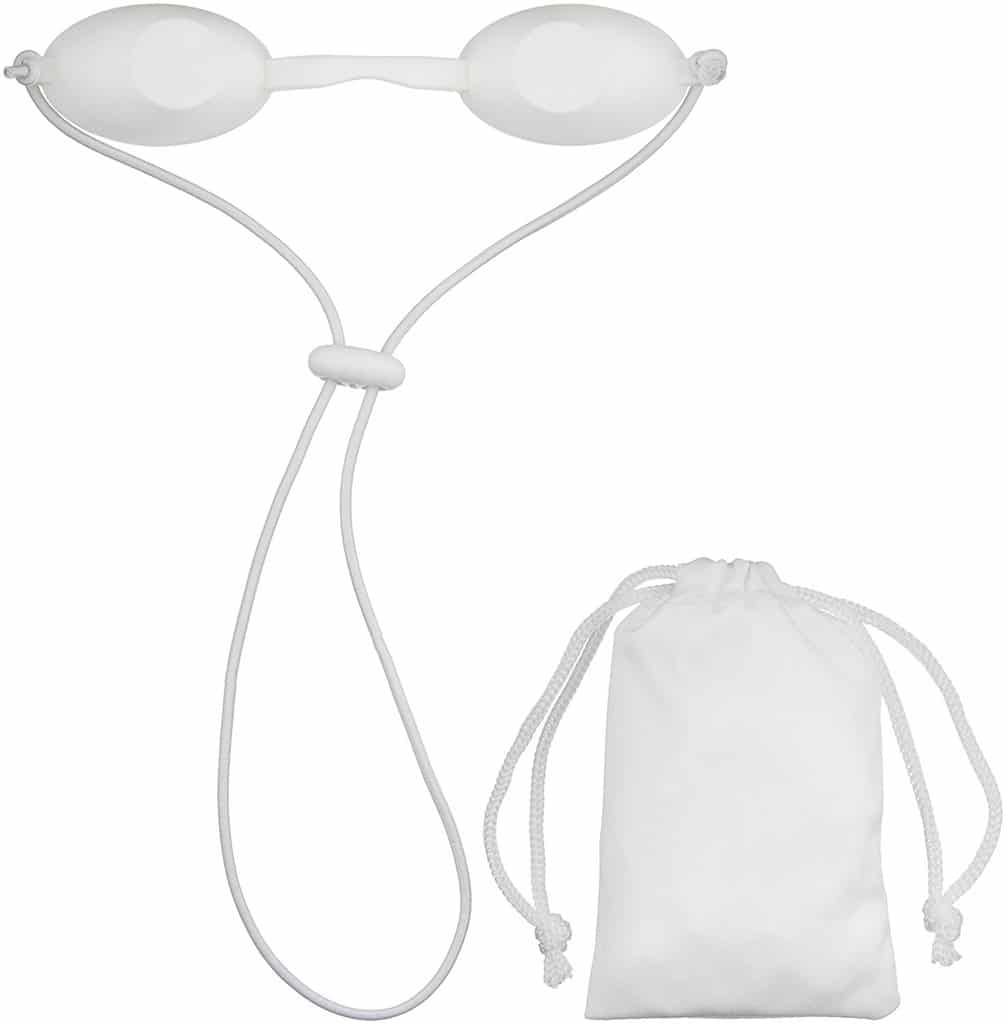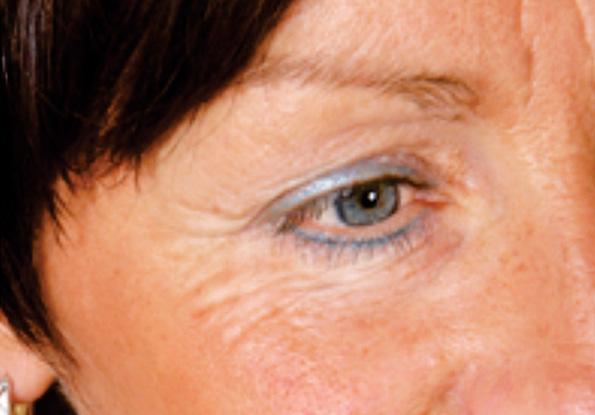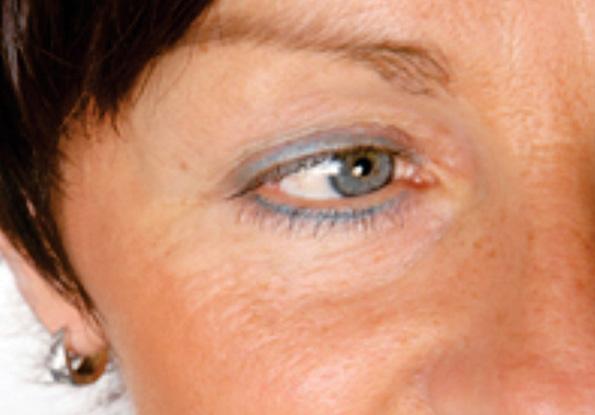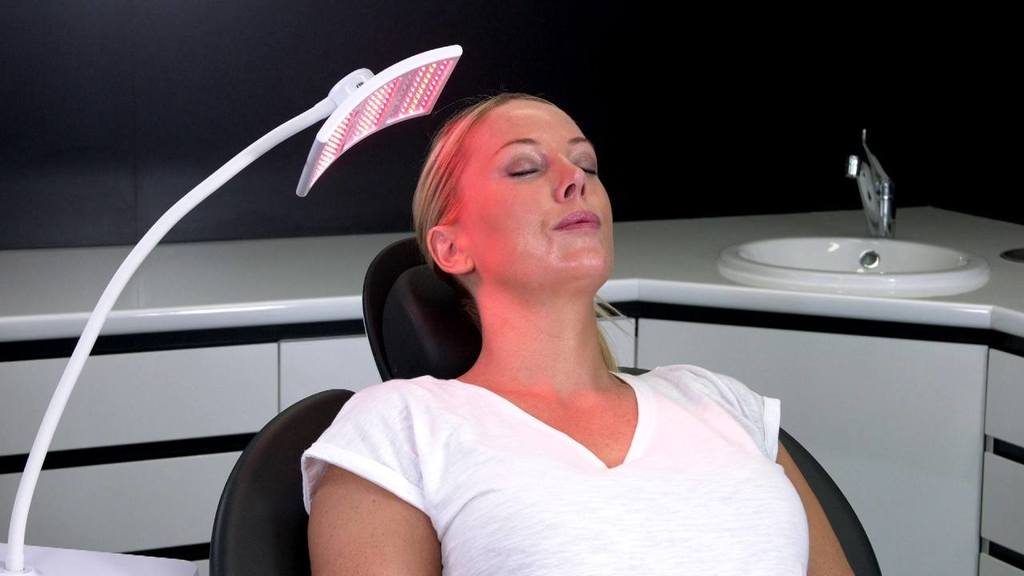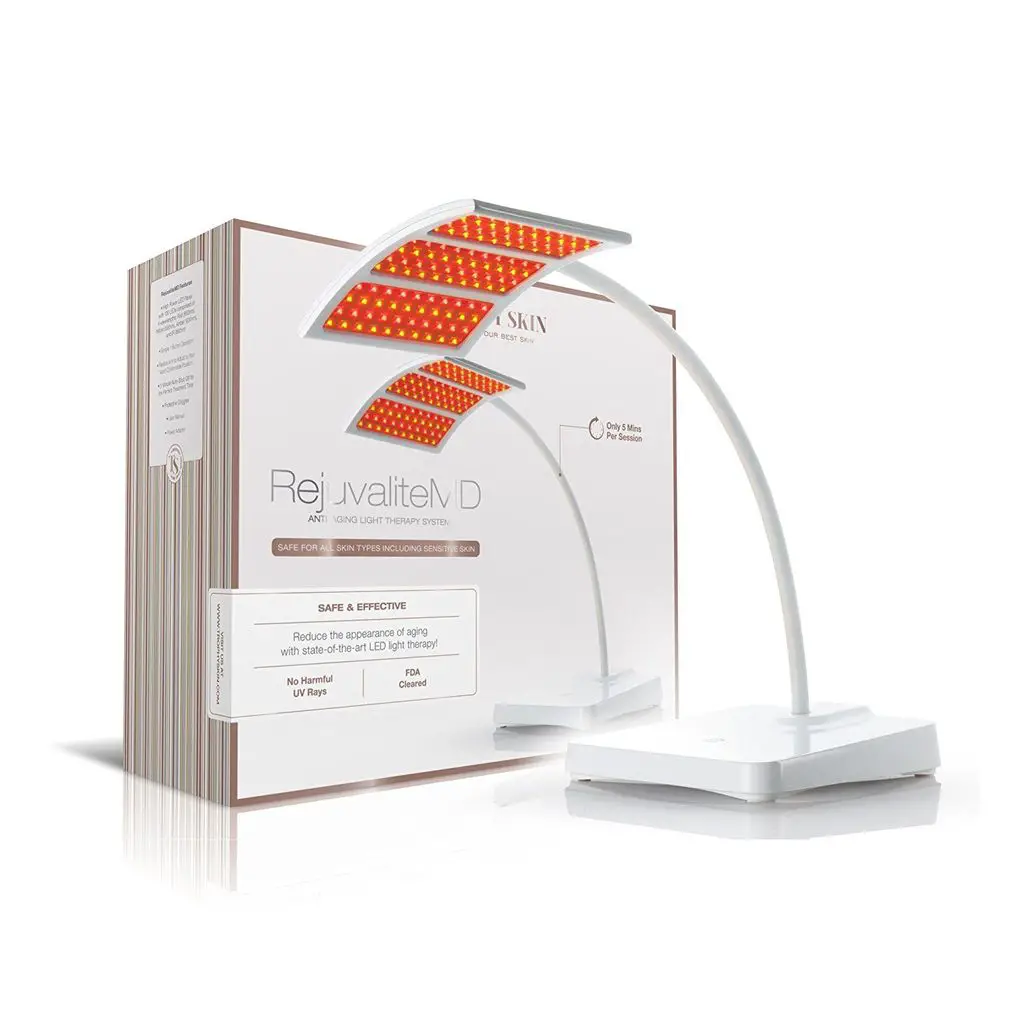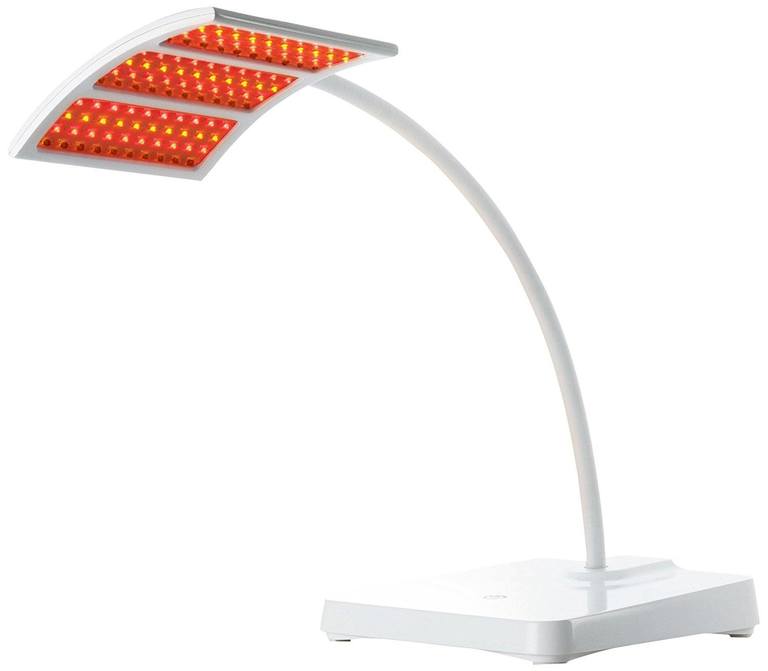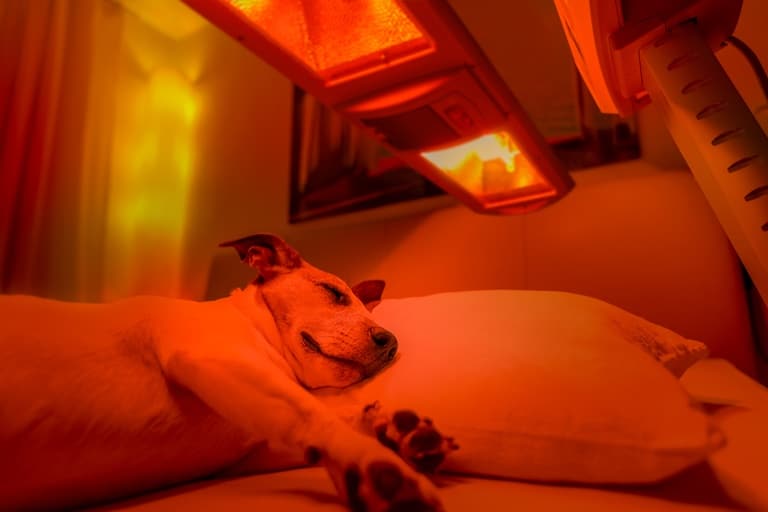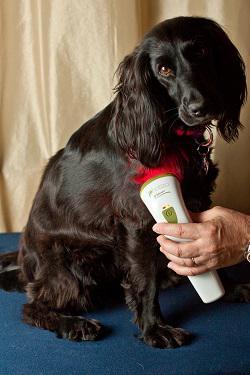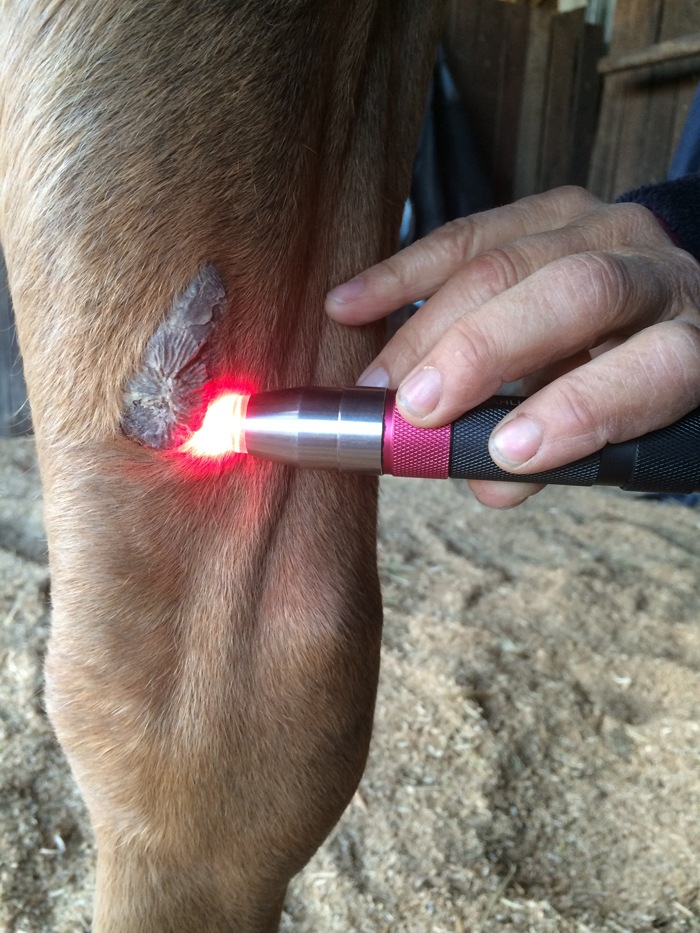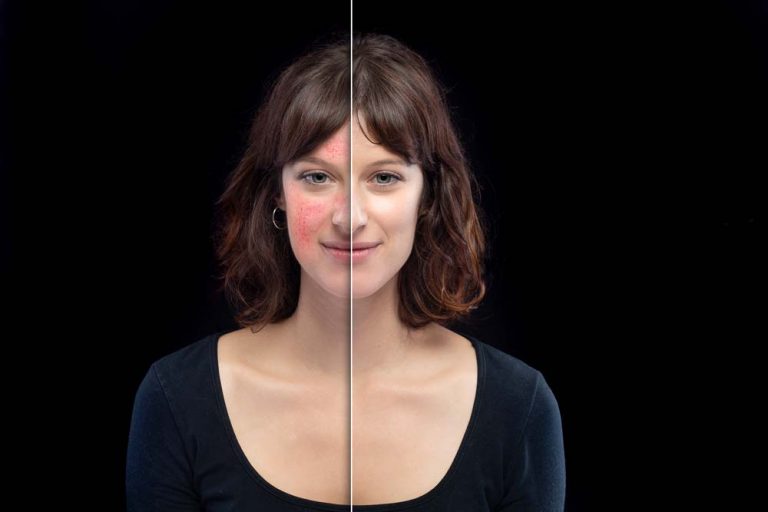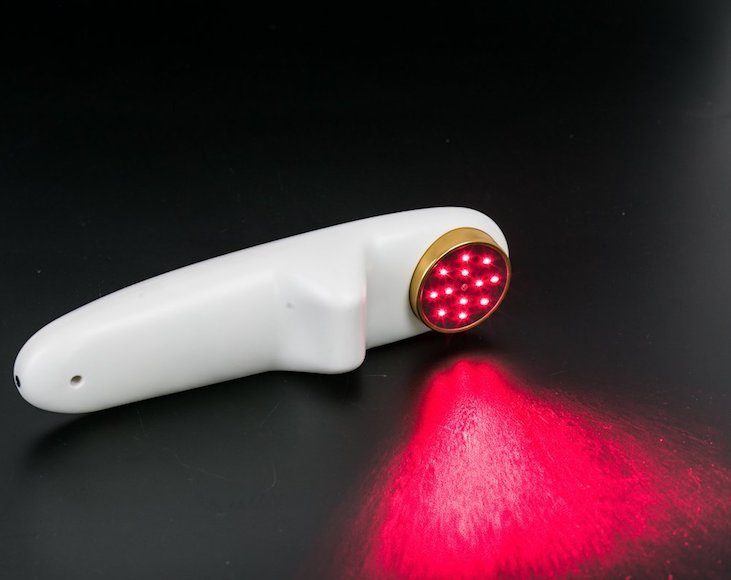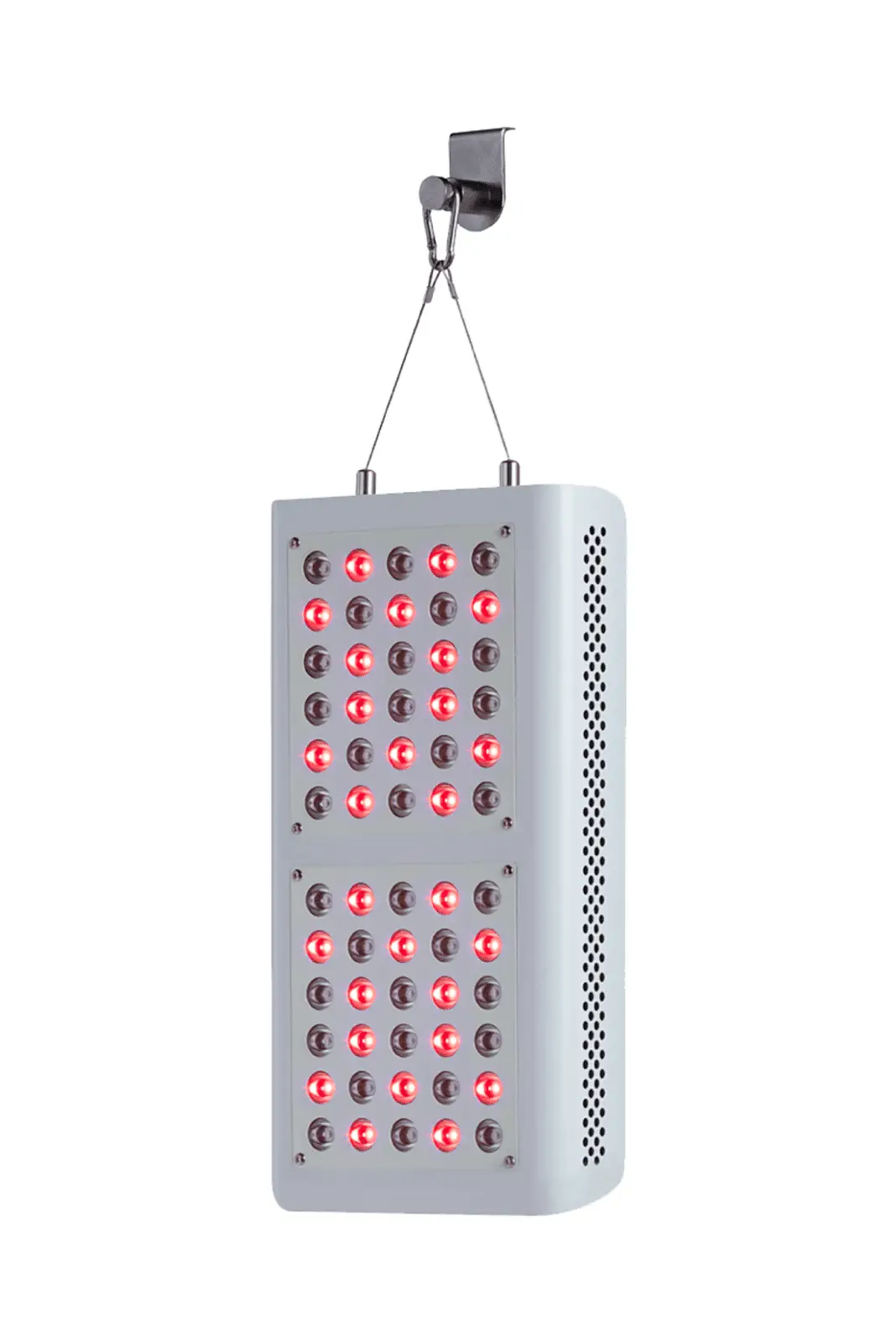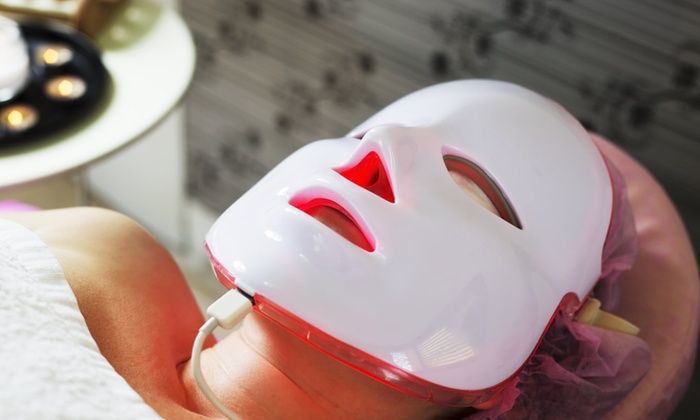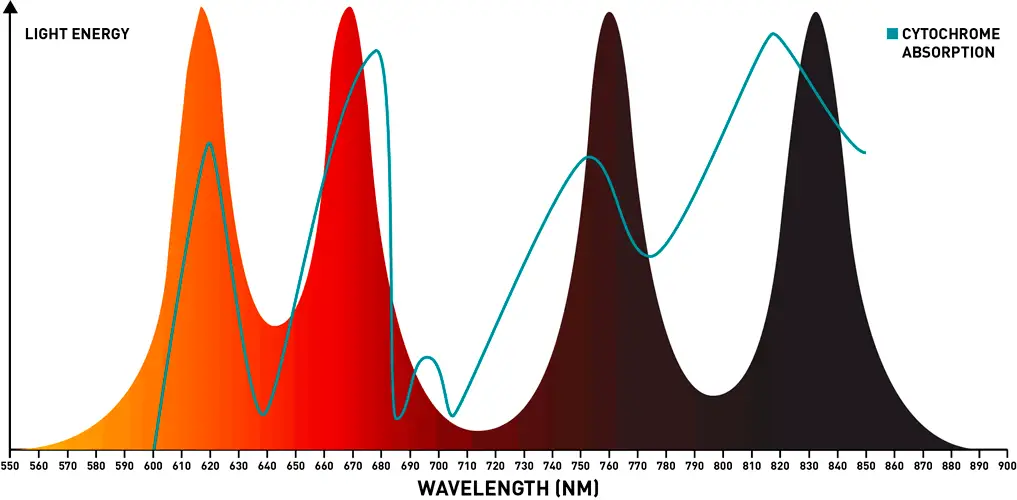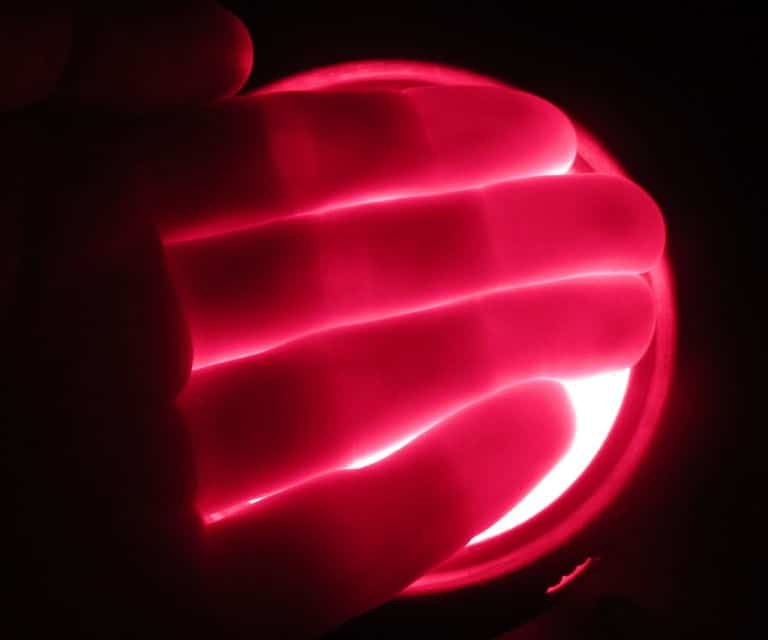Red light therapy is a natural, non-evasive technique that has the ability to promote the body’s own immune responses. Classified as the science of photobiomodulation, it is a safe and effective procedure that uses red light-emitting diodes (LED’s) which diffuse wavelengths through a person’s skin. Commonly referred to as low level laser therapy (LLLT), biostimulation (BIOS) or photonic stimulation, red light therapy has shown significant potential in improving our overall health and well-being in a number of ways.
Research and clinical studies over the past decade indicate strong evidence that the mechanisms of red light therapy have enormous rejuvinating capabilities that can positively affect both the immune and endocrine systems in three ways: reducing inflammation, edema and chronic joint disorders; promoting healing of wounds, deeper tissues and nerves: and as a treatment for neurological disorders and pain and other dermatology diseases.
What is red light therapy?
Red light therapy is the use of a low-powered red light that penetrates wavelengths directly through a person’s skin. It is a painless, chemical-free procedure that produces no heat; so the emitted light creates no feeling when it comes in contact with surface epidermis. During the treatment process, low levels of red light at a depth of about 6-10 millimeters are absorbed into the skin. Studies conducted on red light therapy have shown it can be used as a viable drug-free method used to treat a number of medical desease’s and cosmetic conditions in the fields of neurology, physiotherapy and dermatology.
Historical time line and research of red light therapy
Through the centuries, the use of red light therapy has evolved through the research and practices of scientists around the globe. Although a relative ‘newcomer’ to the world of Eastern medicine, the origin of light therapy can be traced back as far as ancient times. It was the Greeks who first realized that exposure to light produced healing properties that could aid in health restoration.
In the early 1800’s, Danish physician Dr. Niels Finsen, was awarded the Nobel Peace Prize for his work in demonstrating the positive effects wavelengths could have in the treatment of tuberculosis.
During the 1960’s, European researchers found that certain single wavelengths had a significant therapeutic effect on the treatment of tissues through a process called photo-stimulation. A good example of photo-stimulation would be the practice of using light to treat newborns with jaundice, a common condition of the liver that causes yellowing of a baby’s skins and eyes.
Toward the late 1960’s, not long after the first working laser was invented, a Budapest scientist by the name of Endre Mester made a breakthrough discovery on the effects of treatment with a low powered ruby laser. Like other scientists of his era, Mester attempted to use a high-power laser to destroy malignant tumors. He implanted tumor cells beneath the skin of laboratory rats and exposed them to a customized light. To his disappointment, the tumor were not destroyed by doses of what was presumed to be high-power laser energy. Instead, he observed the incisions made to implant the abnormal cells appeared to heal faster in treated animals, compared to incisions of control animals that were not treated with light. Through his experiments, Mester was one of the first to discover how photons are absorbed by mitochondrial chromophores in cells; and how the activation of stem cells allows increased tissue repair and healing. His research uncovered the therapeutic value of red light; documenting how different wavelengths of light can promote healing of skin, muscle, nerve, tendon, cartilage and bone, as well as dental and periodontal tissues. It was Mester’s initial work that eventually led to expanding the field of mono-chromatic light treatment for continual research in the medical world- for which he earned the moniker- the ‘Father of Photobiomodulation’.
Fast forward to the 1990’s, where NASA scientists pioneered technologies using red lighting for space missions. Originally used to cultivate plant growth in the confinement of a space vehicle, further extensive research found that the use of red light penetrated deep into tissues could not only stimulate cell growth; it could promote healing in both humans and animals.
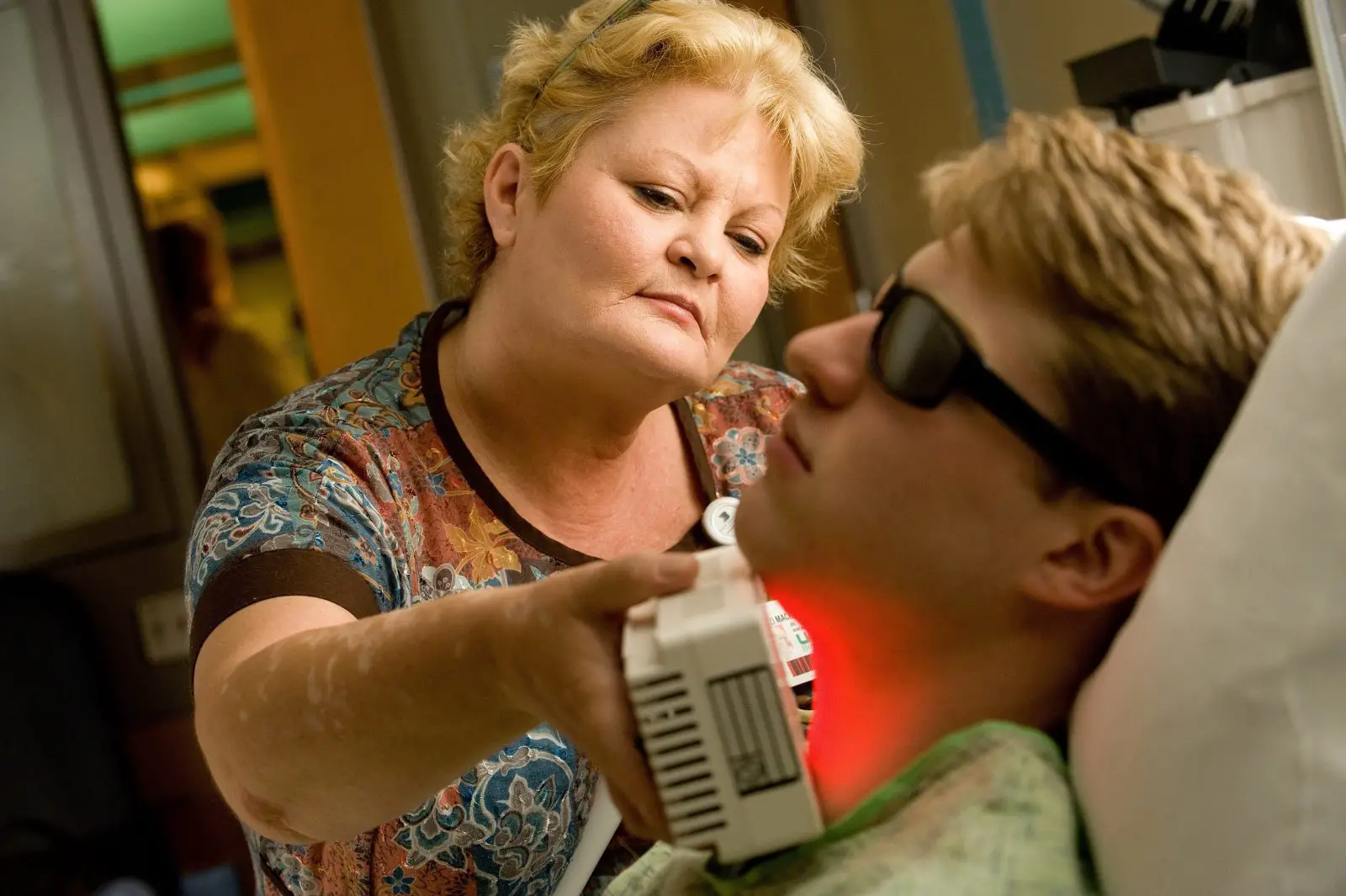
How does red light therapy work?
For over 30 years light therapy has proven to have powerful therapeutic benefits to living tissue in our body. It is a known fact that our bodies need light; without it, we would experience physiological and emotional changes, as well as become dangerously deficient in vitamin D. Our bodies, in general, have specific reactions to light, but with red light therapy in the 600–900 nm range, light energy has the ability to pass through human tissues much easier than other wavelengths. Once red light wavelengths are penetrated and absorbed into the skin, it transforms into cellular energy where it not only stimulates our body’s natural processes- it ‘jump starts’ a variety of metabolic events such as:
- Increases energy levels by the release of ATP
- Formation of new capillaries.
- Activates the lymphatic system
- Stimulates or decreases inflammation
- Increases blood flow/circulation, bringing more oxygen and nutrients to our cells and tissues
- Increased production of collagen and fibroblasts.
- Stimulates DNA or RNA synthesis
- Increased phagocytosis, or cellular clean up.
- Repairs and restores damaged soft connective tissue
- Lowering effects of oxidative stress/free radical damage, associated with many effects of aging
When the energy from light is absorbed by our bodies, specifically in the 600 nm to 900 nm range, research indicates it can generate biological responses. One of these responses is the stimulation of ATP (adenosine triphosphate), which is the mode of chemical energy transportation at the cellular level. The cells receive this rejuvenating and stimulating ‘energy boost’ that enables them to perform their natural functions at a heightened level. Affecting all layers of the skin, red light therapy can reach blood vessels, lymph pathways, nerves, and hair follicles- dependent on which part of the body the red light is projected.
Another way of understanding the biological responses that occur during light therapy is to consider the color red. According Leanne Venier renowned engineer, scientist and expert on light frequencies and the healing affects of color therapy, red light is naturally attention-getting, energizing, stimulating and “representative of survival, joy and passion” in humans because of how it effects of our central nervous system. In addition to garnering our attention, the color red also has the ability to induce a ‘fight or flight’ reaction that speeds up (improves) blood circulation, causes our heart to beat faster, increases sweat gland production and elevates our stress levels. Although one might think that being effected by the color red in this manner might not be such a good thing; it can, in fact, aid in the healing process because these specific wavelengths of red light create a biochemical affect in our cells that serves to increase mitochondrial function. Much like the sun’s UV rays that have an effect on our skin (sunburn, freckles, and tanning) red light therapy can activate our body’s natural defense system. It also has the profound ability to reactivate complex nutrient systems in our bodies- which can aid in rejuvenation processes.
Benefits of red light therapy
1. Repairing tissue and reducing pain
Light-emitting diode (LED) technology has provided medicine with tool that has the capability to deliver light deep into tissues of the body, at wavelengths in the higher range (600-1000nm- deeper penetration) which are optimal for healing wounds, reducing pain and repairing tissues. The effect of LLLT therapy in relation to wound healing can be explained by several basic biological mechanisms.
- A higher density of light can promote stimulation in the skin through increased cellular proliferation, migration and adhesion
- Light therapy can affect skin cells through regeneration of fibroblasts, keratinocytes and modulation of immune cells
- It increases the induction of cytokines -signaling molecules that stimulate the movement of cells towards sites of inflammation, infection and trauma- thus reducing inflammation and pain
- Stimulates growth factors such as hemostasis, inflammation, proliferation, and tissue remodeling which are all responsible for the varied stages of healing wounds.
2. Anti-aging effects and hair loss
Red light therapy has become increasing popular because of its ability to stimulate skin tissue, regenerate and improve the appearance of facial skin. During low level laser therapy treatments, circulation is increased and fibroblastic activity, collagen production and healing are promoted. This effect has produced positive results in the increase of collagen density, improved skin tone, texture and feeling of the complexion- along with reduced roughness of the skin, wrinkles and fine lines. Research and clinical trials have shown that red light therapy is an effective treatment for a number of skin conditions such as Rosacea and acne.
There is also studies that show that RLT helps with weight loss due to the fact that it disperses fat cells.
Alopecia (loss of hair) is a common disorder affecting more than half of the population worldwide. Androgenetic alopecia, the most common type, affects 50% of males over the age of 40 and 75% of females over 65. Although controversial in its ability to reverse the effects of balding, controlled clinical trials have demonstrated that LLLT can promote hair growth in both men and women by stimulating epidermal stem cells in the hair follicle bulge and shifting the follicles into anagen phase (the hair growth cycle when the hair enters a state of active growth).

3. Improve joint and muscle health
Since the late 1980’s, LLLT has been clinically used for patients who suffer from arthritis as a short-term treatment for relief of pain and morning stiffness. Now an FDA approved treatment, physicians use it to help patients suffering from chronic joint pain. Red light therapy’s ability to stimulate collagen production, rejuvenate cells, increase blood flow and rebuild cartilage make it a favorable treating and preventative tool against the root causes of osteoarthritis, rheumatoid arthritis and various other inflammatory joint issues. The 800-900nm range seems to be optimal for wavelength penetration (to the arthritic joints) and around 820nm for maximum effects on the cell.12 Clinical studies show red light therapy works because it has the capability to reduce inflammation in the joints quickly- thus reducing the pain, often times, almost immediately following treatment.
Light therapy is non-invasive and pain free, so its has become popular in treating animals like horses and domestic pets.
4.Light therapy can also improve muscle health.
According to a study in Lasers Med Science positive results have been reported with LLLT therapy in several experimental models of skeletal muscle injury and repair. Throughout our body we have myosatellite cells, a type of muscle stem cell actively involved in growth and repair. Typically, these cells exist in a relaxed, inactive state, but when penetrated with LLLT therapy they turn into fully functional muscle cells as part of the healing process. In response to injury or exercise trauma the stimulation of myosatellite cells plays an important role in the regeneration of skeletal muscle.
5.Reduced Side Effects of Cancer Treatments
NASA technology has come a long way since it first experimented with red light therapy to cultivate plant life on shuttle missions. In recent years, NASA advanced light therapy to a new level when scientists developed HEALS, High Emissivity Aluminiferous Luminescent Substrate- a treatment that involves the use of far red/near-infrared light-emitting diode devices that release long wavelength energy in the form of photons. HEALS has proven to successfully stimulate cells to aid in healing while simultaneously reducing the painful side effects bone marrow and stem cell transplant patients experience from chemotherapy and radiation treatments. In partnering with the University of Alabama at Birmingham Hospital, NASA conducted a two-year clinical trial, where cancer patients were given HEALS to treat a common and extremely painful side effect of cancer treatments called oral mucositis. The trial concluded that as a result of HEALS, 96 percent of the patients had experienced improvement in pain. Furthering the success of this treatment, researchers have also worked to develop HEALS technology for the use across the medical field- specifically in regard to pediatric brain tumor patients and those who suffer from ‘hard-to-heal’ wounds or infections such as diabetic skin ulcers serious burns.
6. Helps Depression and Fatigue
In clinical studies, continual exposure to red light therapy has proven beneficial for individuals suffering from depression or fatigue. Research shows that upon the onset of red light wavelengths penetrating facial skin, neurons begin the process of increasing neurotransmitter production, which elevates mood. Treatment in patients who were mildly depressed, fatigued or suffer from SAD (seasonal affective disorder) reported feeling happier, more energized, and positive.
Many believe that red light therapy is centered on Chinese medicine philosophies. More specifically, how it correlates to the mechanism of action found in administering acupuncture. Eastern doctors believe that light is a form of energy and light therapy is based on the idea that colors are associated with chakra in the body. It is believed that these chakras (electrical energy centers that exist throughout the body) can have a profound effect on our emotions and mood. Rather than using needles to stimulate the light energy in chakra zones or meridian points- light therapy is penetrated deep into the tissues.This practice allows the opening of pathways in our body; and, by stimulating these points throughout the body, red light therapy can help balance our physical, spiritual and emotional well-being.
How often to use red light therapy
Red light therapy can be administered using any red light source including incandescent, halogen, fluorescent, LED, or low level laser. Each has its own benefits (and drawbacks) but they are all capable of being effective for a growing list of conditions. Consulting with your physician or a specialist who uses red light therapy will be essential in determining what wavelength (6-10nm) is optimal for treating the condition, as well as the duration of length each session should be.
As with any treatment that is administered on an on-going basis, patients who undergo red light therapy should continue sessions for at least one to three months before the effects are visibly noticeable. On-going regular sessions will also be critical to maintain the benefits red light therapy can provide. Your physician can recommend a long term plan in accordance with the condition you want to treat so you can receive maximum benefits during your sessions.
Where do I go for red light therapy?
Although conventional doctors in the western world still consider the use of red light therapy more of an alternative treatment, it has been widely used for many years in the East- especially in Asia and Russia. While eastern medicine has less astringent government restrictions for approving new treatments, many conventional doctors in the west still believe that there is insufficient evidence confirming its degree of effectiveness for all patients- even though many red light therapies have been approved by the FDA (Federal Drug Administration).
Many people who are interested in LLLT treatments can ask their primary care provider or chiropractor for a referral to a dermatologist, oncologist, orthopedic, rheumatologist or neurologist who administers red light therapy – who your doctor or chiropractor refers you to will be dependent on the condition you are seeking to treat.
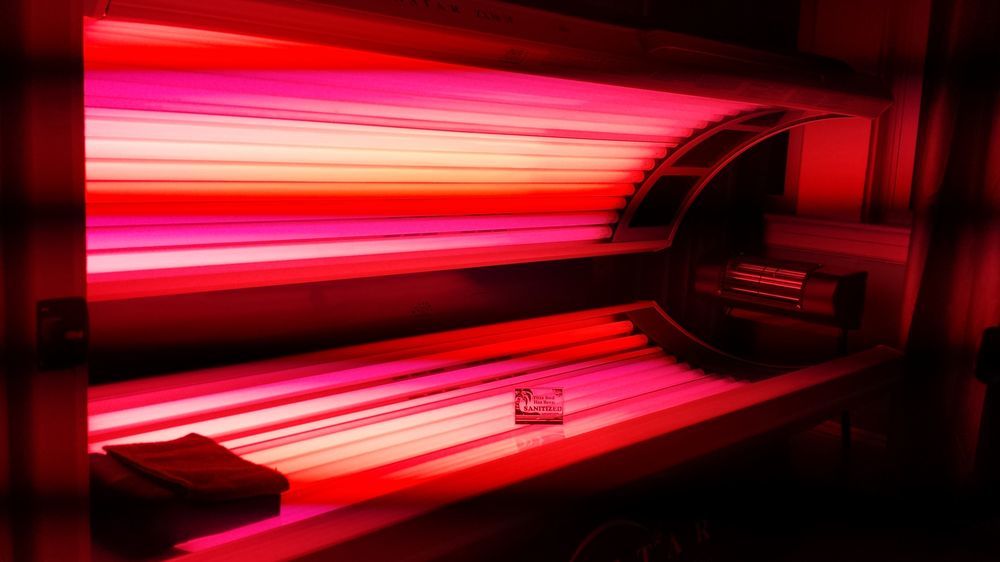
A popular option for those wanting the skin benefits of red light therapy is a visit to a spa, tanning salon or gym (like Planet Fitness Full Body Enhancement) that offers sessions for about $50-$100 per session. However, if you choose this option, it is recommended that the treatment you receive is administered by a trained and qualified professional. There are also a number of products on the market today that produce red light therapy for home use. Home remedy red light therapy machines like the RejuvaliteMD by Trophy Skin, the reVIVE DPL II, and Norlanya’s Photon Therapy Machine seem to have good reviews for their effectiveness in treating dermatology conditions. For many people, these devices can be more cost effective for continuing sessions because prices range from $50 for a small portable unit to $800 for a deluxe model. As with any red light therapy machine/device you purchase, you should always use caution, know the risks and above all, consult with your doctor prior to beginning at home treatments.
Many gyms and tanning salons now offer red light therapy beds for whole body treatments. When choosing this option make certain to ask if the wavelengths are between 620nm and 800nm. As a pre-cautionary measure, you should also inquire if the beds used at the gym are FDA approved.
Possible side effects and risks of red light therapy
Red light therapy is considered a safe, non-evasive well tolerated treatment. For the most part, it is unlikely that a person would experience any adverse side effects. However, there have been reports of a few mild and short lasting ones such as eye strain, dizziness, headache, nausea, sleep disturbance and irritability. Although all of these negative side effects are generally considered manageable, it is recommended that lowering the dose of the application, shortening the length of your sessions, changing the time of day you receive your treatments or taking longer breaks between sessions will help you eliminate or reduce any discomfort that occurs.
To avoid any risk and/or side effects when using red light therapy you should always consult with a doctor prior to treatment. A physician can determine the appropriate dosage and timing of the red light to reduce the possibility of any adverse side effects. Safety measures for your eyes should be taken if you are using red light therapy on your facial skin- goggles and specially designed covers for eye protection are optimal safety guards.
Final thoughts on red light therapy
- Red light therapy/LLLT (low level laser therapy) is a completely safe, chemical-free, pain-free procedure that is well-tolerated with no harmful side effects.
- By emitting red, low-light wavelengths through the skin to stimulate cellular rejuvenation, increase blood flow, stimulate collagen and more; red light therapy has shown significant potential for improving our health and well-being.
- It offers patients a relaxing non-evasive experience that has quickly becoming a popular alternative to conventional treatments because of its application and benefits.
- Red Light therapy/LLLT treatments has a number of benefits- from healing wounds, reducing pain and repairing tissue, improving joint and muscle health to treating the side effects cancer patients experience from chemotherapy and radiation. Red light therapy has become a revolutionary treatment for anti-aging and hair loss.
- Clinical and scientific evidence for red light therapy certainly seems convincing…and, promising. However, many are still a bit skeptical on the degree of effectiveness red light therapy produces. And, because the uses of new treatments depend on FDA approval in the western world of medicine, many experts and researchers agree further research is needed.
